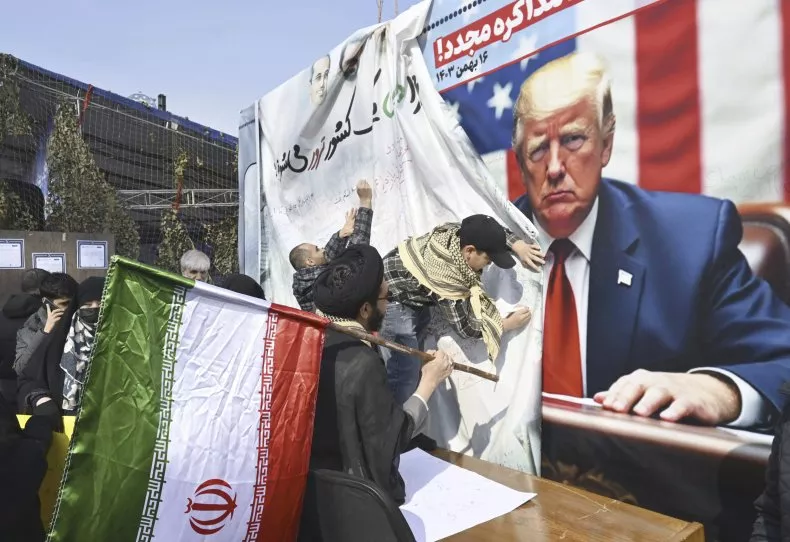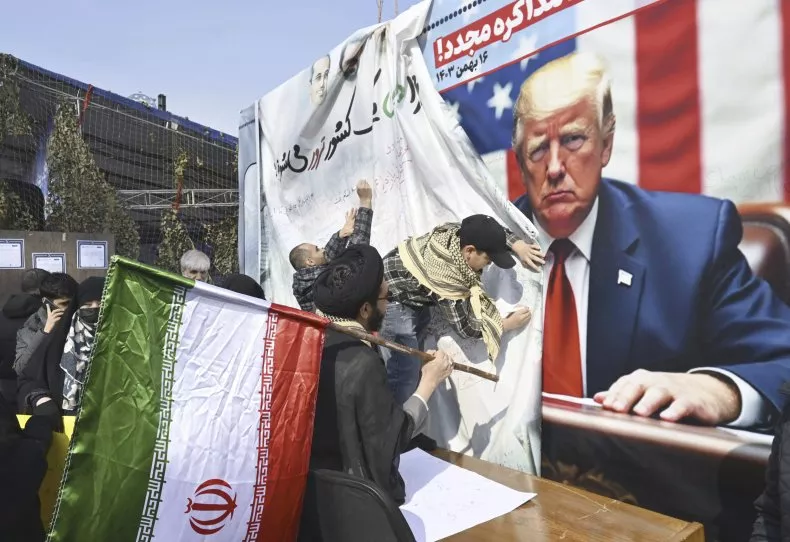
Tensions between the United States and Iran are rising, increasing fears of a possible military conflict. Both countries are making moves that suggest they are preparing for a confrontation. These include military buildups, airstrikes, economic sanctions, shows of force, and diplomatic struggles.
Newsweek has reached out to the U.S. State Department and Iran’s Foreign Ministry for comment.
Why This Matters
The U.S. has long been worried about Iran’s nuclear program, seeing it as a threat to security in the Middle East and beyond. In 2018, President Donald Trump withdrew from the Iran nuclear deal, known as the Joint Comprehensive Plan of Action (JCPOA), claiming Iran wasn’t following the agreement. This led to harsh economic sanctions on Iran. Despite this pressure, Iran has increased its nuclear activities, insisting its program is only for peaceful purposes. However, with little progress on a new nuclear deal, tensions are rising.
Five Signs of a Possible Conflict
1. Military Buildup
The U.S. has increased its military presence in the Persian Gulf and the Indian Ocean, deploying B-2 stealth bombers, cargo planes, and aerial refueling tankers. Two major aircraft carriers, the USS Carl Vinson and the USS Harry S. Truman, are also in the region.
In response, Iran has strengthened its missile defenses, placing advanced systems near the Strait of Hormuz, a critical waterway for global oil shipments. It has also expanded its military activities in the region.
2. U.S.-Israeli Strikes and Iran’s Allies
Both the U.S. and Israel have stepped up military operations. Israel’s airstrikes in Gaza have drawn Iran deeper into the conflict, as Iran continues to support militant groups.
Iran backs several groups in the Middle East, including Hamas, Hezbollah, and militias in Iraq and Syria. Recently, the U.S. has increased attacks on the Houthi rebels in Yemen, who also receive support from Iran.
3. Economic Sanctions and Pressure
The U.S. has been using economic sanctions to weaken Iran. After leaving the nuclear deal in 2018, the U.S. targeted Iran’s oil exports, banking system, and military industry. These sanctions have hurt Iran’s economy but haven’t forced it to stop its nuclear program.
Instead, Iran has continued developing nuclear technology and missiles. The return of Trump’s “maximum pressure” policy has increased tensions, making military action more likely if Iran doesn’t change course.
4. Military Showdowns
Both countries are showing off their military strength. The U.S. has sent B-52 bombers on missions near Iran, while also conducting joint military drills with Israel.
Iran has responded with military exercises alongside Russia and China. It has also displayed its missile power by revealing underground “missile cities” and testing long-range missiles. These actions are meant to send a warning to the U.S. and its allies.
5. Failing Diplomacy
Relations between the U.S. and Iran have been strained since the U.S. withdrew from the nuclear deal. Attempts to renegotiate have stalled, and Iran has turned to Russia and China for support.
Recently, President Trump sent a letter to Iran, demanding a new nuclear agreement within two months or face military consequences. With negotiations going nowhere and the deadline approaching, the chances of military action are increasing.
What Experts Say
Negar Mortazavi, a Senior Fellow at the Center for International Policy, told Newsweek:
“The way things are going, the U.S. and Iran could end up in a conflict, but it doesn’t have to be that way. Both sides have shown interest in diplomacy. President Trump has said he is open to talks, and Iran has responded. But his ‘maximum pressure’ strategy won’t work. Iran has proven that more pressure leads to more resistance. Both sides need to find a middle ground.”
What Happens Next?
With more military forces in the region and economic pressure increasing, the chances of a direct conflict between the U.S. and Iran are growing.
Israel’s military operations in Gaza, Iran’s support for militant groups, and the upcoming deadline for a nuclear deal will all play a role in shaping the next few months. If diplomacy fails, military action could become a reality.

